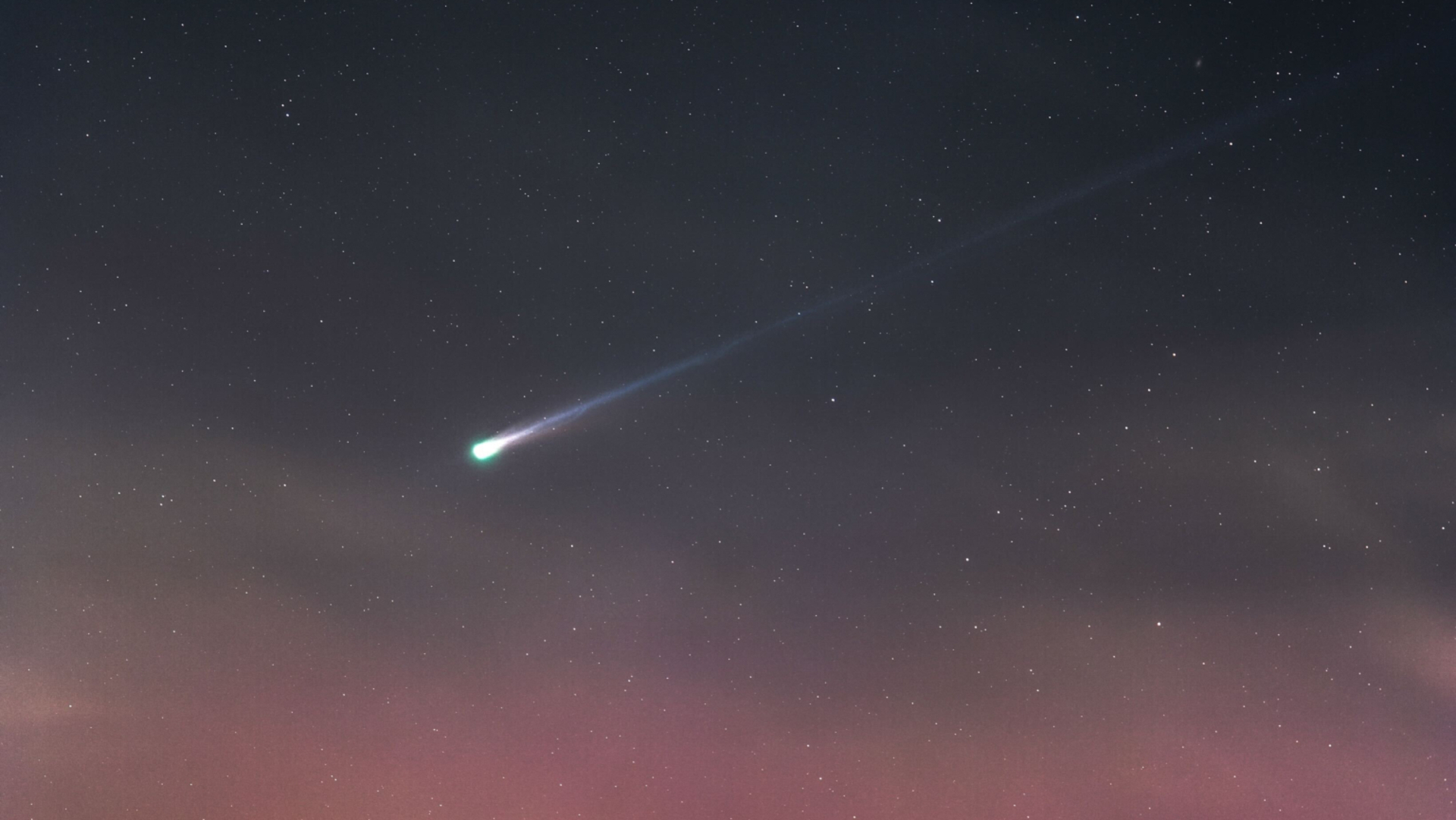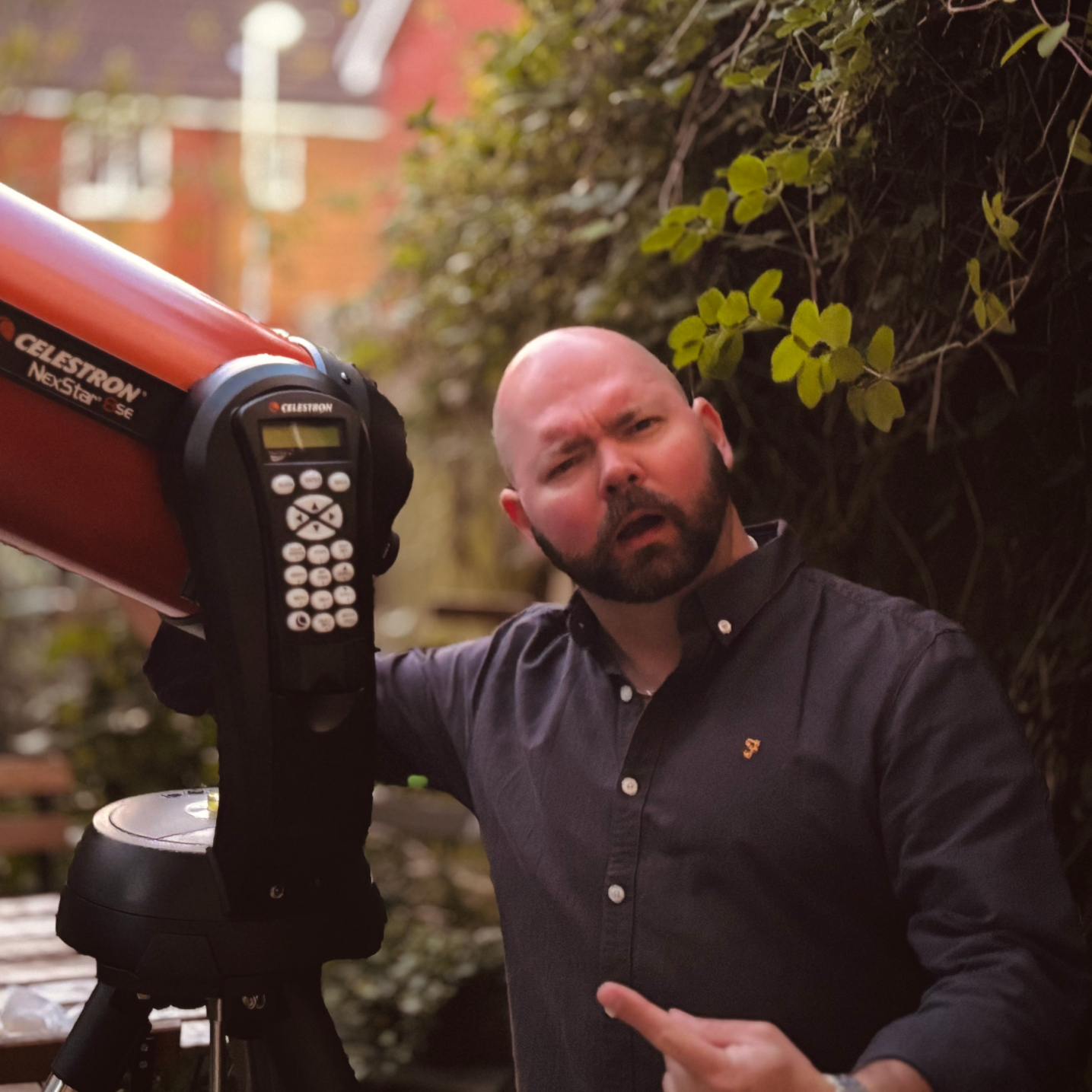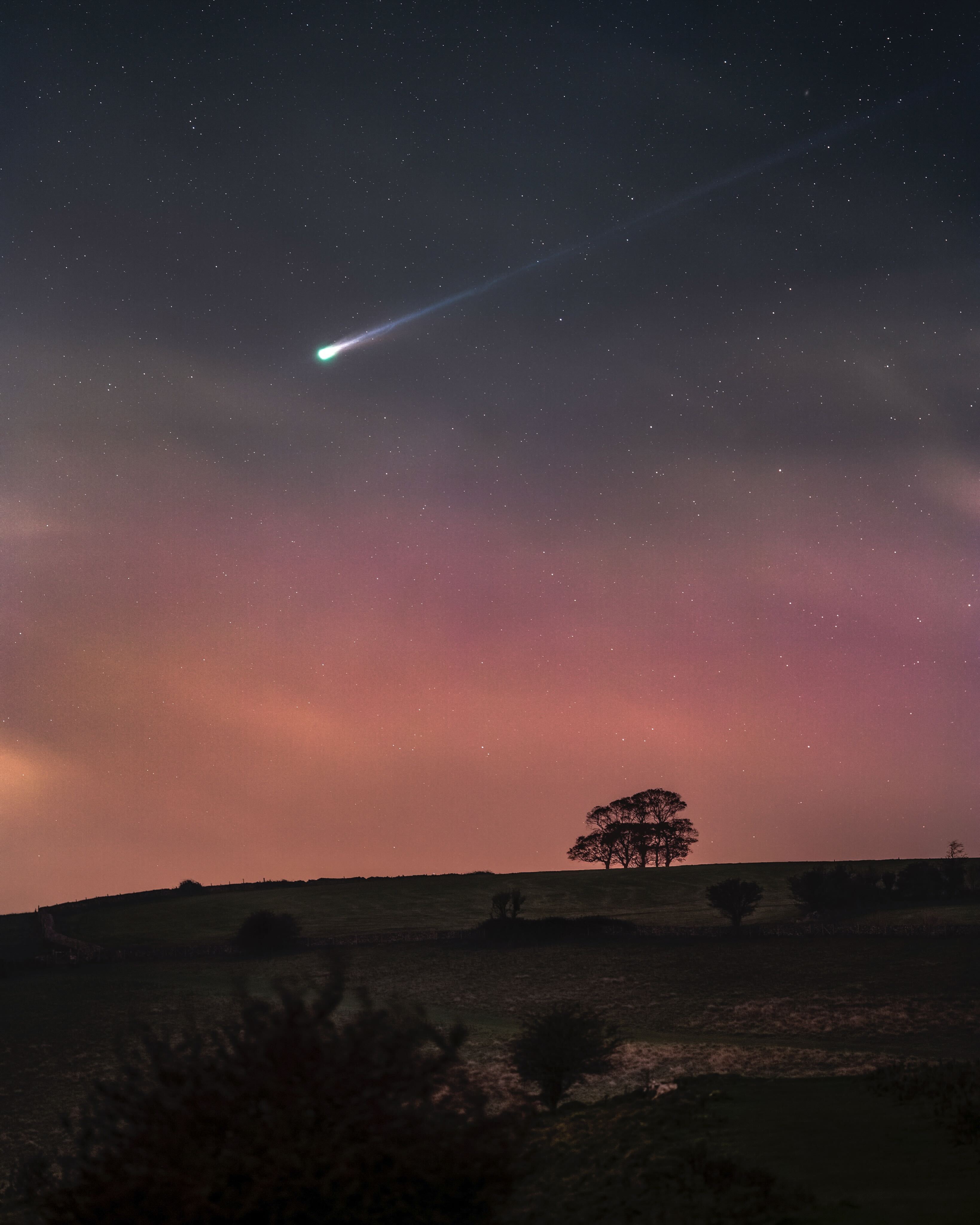Comet Lemmon's ghostly tail haunts the skies above England (photo)
See Comet Lemmon shine in the skies over England in a new sunset portrait.

Award-winning astrophotographer Josh Dury has captured a stunning view of Comet C/2025 A6 (Lemmon) shining in the sky over Somerset in the U.K. ahead of its close approach to Earth on Oct. 21.
Dury revealed Comet Lemmon's bright green coma and long diffuse tail streaking through the eventing sky in exquisite detail as day gave way to night above the Mendip Hills area Oct. 12.
Comet Lemmon's tail was formed when heat radiating from the sun caused icy materials embedded in its ancient body to transform directly into gas, a process known as sublimation. This diffuse cloud of debris was then blown away by the steady stream of charged particles emanating from our sun known as the solar wind — hence why a comet's tail is always seen pointing away from the sun.
Dury worked through haze and high wind to capture a breathtaking shot of the distant night sky visitor using his Sony A7S III camera in concert with a Sigma 135mm F/1.4 Art lens, as a diffuse pink aurora glowed close to the horizon. "I would say in this instance, the weather was more the challenge," Dury told Space.com. "With anti-cyclonic gloom affecting the weather for the best part of a week or more, there wasn’t much opportunity to photograph the comet from here in the West Country. Taken from higher ground, I was surrounded by haze, mist and fog."

Looking to photograph Comet Lemmon? Try the Nikon Z9, one of the top-performing digital cameras ever made and delicious overkill for astrophotography and landscapes. Get yours today.
Comet Lemmon has a current magnitude of around +4.9, which should make it visible to the naked eye from dark sky locations. The comet is expected to continue to brighten ahead of its close approach to Earth, after which it will gradually fade from our skies for over a thousand years. During that time, it will undertake an elliptical tour of the distant solar system that will take it well beyond the orbit of the gas giant Neptune.
Stargazers hoping to capture an image of Comet Lemmon before it disappears from Earth's sky should consider picking up a copy of Dury's book 52 Assignments: Night Photography, which gives tips on how to image comets and countless other deep sky targets. Be sure to also check out our finders guide detailing where and when to look for Comet Lemmon throughout October.
Editor's note: If you would like to share your astrophotography with Space.com's readers, then please send your photo(s), comments, and your name and location to spacephotos@space.com.
Breaking space news, the latest updates on rocket launches, skywatching events and more!

Anthony Wood joined Space.com in April 2025 after contributing articles to outlets including IGN, New Atlas and Gizmodo. He has a passion for the night sky, science, Hideo Kojima, and human space exploration, and can’t wait for the day when astronauts once again set foot on the moon.
You must confirm your public display name before commenting
Please logout and then login again, you will then be prompted to enter your display name.

